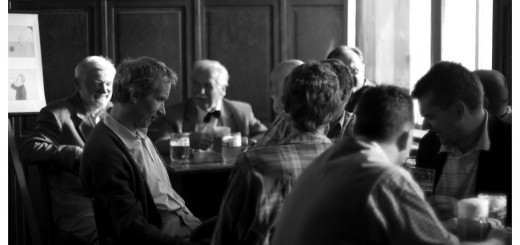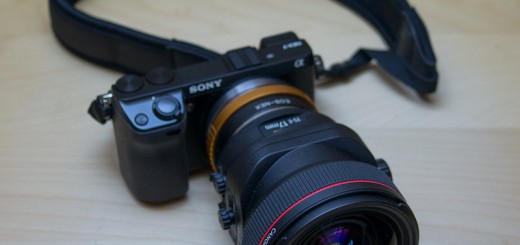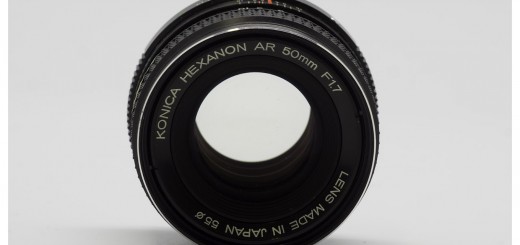My second radioactive acquisition. There were few versions of this Takumar, only first one to introduce 8 elements in 7 groups, while all later ones, including mine have 7 elements in 6 groups. Another difference among them, is that two early versions – named only Super Takumar, does not have multi-coating glass, while two later versions – Super Multi Coated Takumar and SMC Takumar does. SMC Takumar has aperture made of 8 blades, while the others have only 6.In that regard, my copy tested here is probably the worse one, in terms of sharpness, and I am looking for the two newer versions to see, how much different they are.
Interesting comparison between the versions can be found here:
http://www.pbase.com/gummiebear/50mm_f14_shoot_out
My version (production started at 1965 – 1971) over 40 years old, did come in a solid conditions and everything works as it should.
You can notice yellowish glass which is typical for the lenses that are using rare earth element, I guess Thorium in this case.
You can find lot of different opinions about the radiation risk using this lens on the web.
I believe, that using it occasionally and keeping it far away from my living room and bedroom, should result in acceptable risk.
But anyway, does it worth any risk?
First what you will notice, holding the lens its a superior build quality, and significant weight. Takumars were built to last, and they probably will over-last many modern lenses of today.
Lens has 49mm filter thread, and weight 260g. Minimum focus distance is 45cm and aperture closes from f1.4 to f16.
Lens and Camera:
Following test shows lens character, color, contrast and out of focus rendition at most apertures. Focusing was at the dolls left eye. Shot from tripod with remote, ISO 100, NEX 7, RAW developed in LR 3.6 with standard settings, exported for downsizing in Photoshop. No other corrections applied.
 |
| Sony NEX 7 + Asahi Super Takumar 50mm f1.4 at 1.4 |
 |
| Sony NEX 7 + Asahi Super Takumar 50mm f1.4 at 1.7 |
 |
| Sony NEX 7 + Asahi Super Takumar 50mm f1.4 at 2 |
 |
| Sony NEX 7 + Asahi Super Takumar 50mm f1.4 at 2.8 |
 |
| Sony NEX 7 + Asahi Super Takumar 50mm f1.4 at 4 |
 |
| Sony NEX 7 + Asahi Super Takumar 50mm f1.4 at 5.6 |
 |
| Sony NEX 7 + Asahi Super Takumar 50mm f1.4 at 8 |
 |
| Sony NEX 7 + Asahi Super Takumar 50mm f1.4 at 11 |
 |
| Sony NEX 7 + Asahi Super Takumar 50mm f1.4 at 16 |
Here are 100% crops of the focus area.
As you can see, even at f1.4 Takumar is rather sharp. Already at f1.7 it is very sharp and keep improving up to f5.6, from where the diffraction starts to appear, but its not that bad.
Yellowish glass does not affect colors as much as I would expect, but the tone is present.
Resolution chart is shown bellow with respectful 100 crops.
Corners performance is however very bad wide open, either due to the yellowish vignetting or pronounced coma, or combination of both. For a portrait work, corner sharpness shouldn’t be an issue, but yellowish tone probably will.
Same characteristic can be noticed on a field corner test at a longer distance, as you can see bellow.
There is a slight barrel distortion, but I wouldn’t consider it to be and issue..
 |
| Sony NEX 7 + Asahi Super Takumar 50mm f1.4 at 5.6 |
Here are couple of portraits in a natural light without flash. This is probably the best use of this lens on APS-C.
 |
| Sony NEX 7 + Asahi Super Takumar 50mm f1.4 at 1.4 |
 |
| Sony NEX 7 + Asahi Super Takumar 50mm f1.4 at 2.8 |
Bokeh:
Takumars are famous for the combination of great sharpness and smooth bokeh. Bokeh is very subjective thing, and it is nice indeed, but I still like more Yashinon 50 f1.7 wide open. Stopped down to f4, bokeh is very good, better than most competitors. (IMO)
 |
| Sony NEX 7 + Asahi Super Takumar f1.4 at 1.4 |
 |
| Sony NEX 7 + Asahi Super Takumar f1.4 at 4 |
Most 50mm lenses that I had been testing so far, are good performers stopped down to f5.6-f8 at a longer distances, and Takumar is no exception.
 |
| Sony NEX 7 + Asahi Super Takumar f1.4 at 8 |
 |
| Sony NEX 7 + Asahi Super Takumar f1.4 at 8 |
 |
| Sony NEX 7 + Asahi Super Takumar f1.4 at 8 HDR |
Conclusion:
Asahi Super Takumar 50mm f1.4 is one of those lenses with a pronounced character. There is something that makes it unique, apart of outstanding build quality.
Question is, should you spent around 100 USD this days for an radioactive lens, that certainly does live to its reputation but its not miles ahead of cheaper and less risky competitors?
For those, that are looking for a bit of personality, it probably worth to touch its dark side.










































nice idea.. thanks for posting..
Dear Victor: I really enjoy your reviews. I have 9 Pentax 50 or 55-mm MF lenses including a Super-Multi-Coated 50/1.4 I bought today that I have not yet used. I did do extensive testing of my takumars using the SONY-NEX-7 vs. other “normal lenses”. The overall “winner” was the Canon FD 50/1.4 (I have two specimens) with my results qualitatively similar to yours. My two 50/1.4 Supertakumars were a bit disappointing at f1.4, albeit one of them has some internal spider web fungus. I intend to do additional tests when I have time. I am unfortunately not nearly as skilled as you on a computer. Joe Pickens
Hi Joe,
I am glad that we share experience about Canon FD. I learned by time, that actual condition of those legacy lenses is often more important for their performance than their original optical design. There are so many anomalies that can occur with the glass during years that it is really hard to make any conclusions related to original lens performance. Those Canon FDn are younger than Super Takumars, so they might be simply better preserved.
On the other hand, we are getting new toys with those old glasses, as original as their own history might be 🙂
Thank you for visiting us and have a great day,
Viktor
Dobrý den,
sháním světelnou padesátku pro focení za nízké hladiony osvětlení na Sony A7. Nemáte náhodou, prosím, zkušenost, která verze Takumaru je nejlepší, případně i padesátka jiné značky.
Mnohokrát děkuji za odpověď
Petr
Zdravím,
U Takumaru bude především rozhodovat stav. Nejostřejši by měla být SMC verze, případně první Pentax verze s označením SMC (ale ne i M). Taktéž první verze Takumaru (8 členu) může být o trochu ostřejší a hlavně je bez radioaktivity.
Mohu doporučit Canon FD 50/1.4 , poslední, černou verzi (new FD nebo FDn). Velmi ostrý je i starýTopcor 58/1.4 RE, nebo Zeiss Ultron 50/1.8.
Spokojen jistě budete i s Zeiss Planarem 50/1.4 či levnějším 50/1.7 oba v bajonetu Contax Yashica (C/Y).
V zásadě platí, že u těch starých objektivů, stav hraje větší roli než jejich konstrukce.
S pozdravem,
Viktor
P.S. Pokud byste měl navazující otázky, založte prosím odpovídající vlákno na našem föru. Místo pod články je omezené pro komentáře a není proto vhodné pro dizkuse. Předem děkuji.
Děkuji mnohokrát
Petr
I placed my Super Takumar 50/1.4 (7 element version) front down(without filter) on a small mirror, with a cheap IKEA LED desk lamp (the $15 dollar bendable model with base clip). After 2 days under this intense light, the yellowing was gone. Good news, LED does not emit much heat toward the lens…and it’s cheap and fast. I found this approach within multiple sites on the web. Was unsure of the lack of UV from the LED would be a problem…it wasn’t.
My M4/3 white balance did not require this treatment…I was more concerned with the slowing down of a fast spec’d lens(by up to 1 full stop) due to the yellowing. Problem solved.
As an aside, the Thorium Oxide is not in a coating on these Pentax lenses, but homogeneously (up to 30%) contained within one element. ThO2 is favorable because it has a high refractive index with low light dispersion, allowing for more compact designs with less “curved” (more costly) elements. Thorium has a VERY long half-life (over 14 Billion years) and decays by Alpha particle emission. Alpha’s have very low kinetic energy but are highly charged (+2); essentially Helium nuclei stripped of electrons. They are stopped by the dead human skin layer…so shielding by camera/lens metal, plastic, clothing, other glass elements (etc.) and/or distance makes them essentially harmless. The danger is when the glass is in close proximity to one’s eye surface. Here, the organ is directly exposed and poorly shielded from the effects. Hence why the use of ThO2 in eyepieces was banned long ago. Of course, Alpha particle ingestion is bad because the Thorium could concentrate in an organ susceptible to Alpha radiation. Highly unlikely as this would require one to grind the lens into fine dust and then ingest. Under normal uses, Thoriated camera lens glass is a non issue. Just my opinion as a nuclear engineer and former Chemistry and Radiological Controls (CRA) officer on a nuclear submarine.
Dear Stoli89,
if we would have prize for the best and most useful comment ever, you’ll be among top candidates with this post. Thank you for great suggestion with LED lamp and for your opinion about radioactivity risk. I admit, that your thorough explanation sounded a bit like Sheldon’s monologue from Bing Bang Theory to me, but your conclusion is clear and bold 🙂
All the best and thank you again for valuable input!
Viktor
Thanks for the feedback. As an aside, I did ask Sheldon why these lenses darken over time. What is the root cause? According to him (:P), this is not especially due to the irradiation of coatings, cement or glue. It’s the glass itself…specifically the glass element in which the Thorium Oxide is homogeneously present. Within the element, the ionizing radiation causes defects in the chemical bonds with the glass. These defects introduce new wavelength absorptions (i.e. darkening of glass). The defects will RECOVER over time if the ionizing source is removed. However, since the ThO2 is homogeneously present in the structure, an equilibrium will be reached. The higher the concentration of the ThO2, the darker that eventual equilibrium. High intensity light accelerates the RECOVERY of these defects. However, the lens will gradually trend (darken) back toward equilibrium in between “RECOVERY” treatments.
Sheldon can be a bit “thorough” sometimes.
PS: This is also why thick lead glass viewing portals in the secondary containment wall of a nuclear reactor may tend to have a slightly darkened tinge to them over time. Assuming you actually wanted to know this.
BAZINGA!!!!
Thanks Stoli89, really appreciated. There are not many reliable info on radioactive lenses and it usually ends with those who are saying “It’s dangerous, why risking” and those who says “we are exposed to more radioactivity by one flight that using one of affected lenses whole year”. I am glad your comments are putting things in better perspective, maybe I will include them in a regular post, once I get back to legacy lens testing.
Cheers,
Viktor
Thx for clarifiyng, really appreciated
The one mystery that remains in my mind about radioactive lenses is whether the yellowing also has any effect on the refractive index of the glass. If that were the case, it might explain why the corners were not great on a yellowed specimen. I’ve seen some speculation about this, but I’m not aware of anybody who has tested it.
Hi Tony,
it’s not such a mystery in fact. Yellowing works a bit like vignetting for some wave lengths. In effect, it should cause differences in scene rendering, mainly in the micro and global contrast department. So yes, (absolute) refractive index might be affected, but it shouldn’t have significant influence on SA, nor on other type of aberrations causing image smearing (darkening, color shifts and/or loss of contrast are more probable consequences)
To test it, we would need optical bench with refractometer, which is too much complex and complicated (and obtained results will be hardly relevant for reference use in particular imaging systems), so I doubt anyone is going to do it.
For us users, it can be simplified – glass yellowing does affect image quality, especially on digital sensors, but corner smearing (blurriness) shouldn’t be affected by it to the notable level. Color shift and contrast loss might be, to the amount depending on many other factors – scene structure, colors, lighting, distance etc….